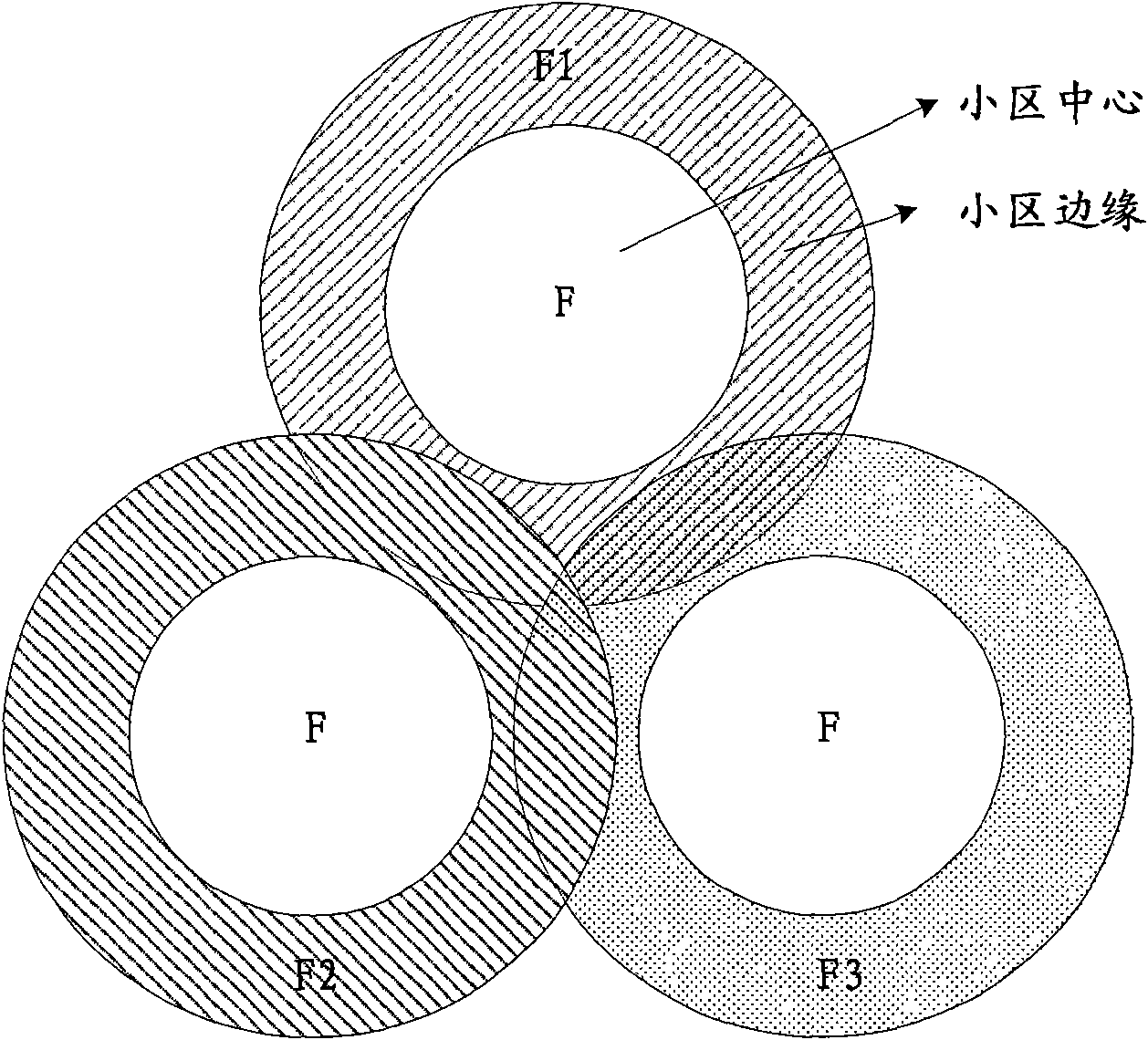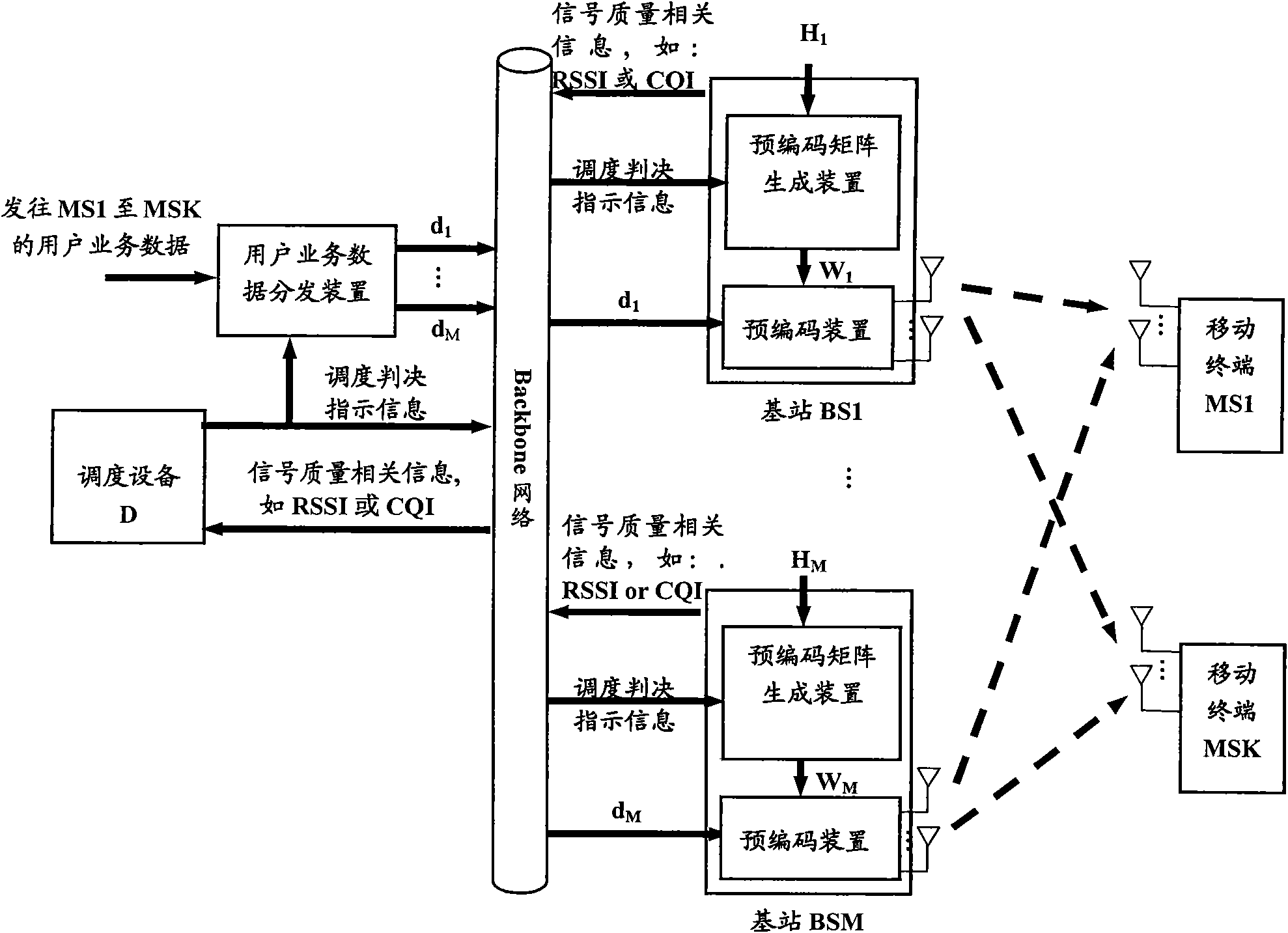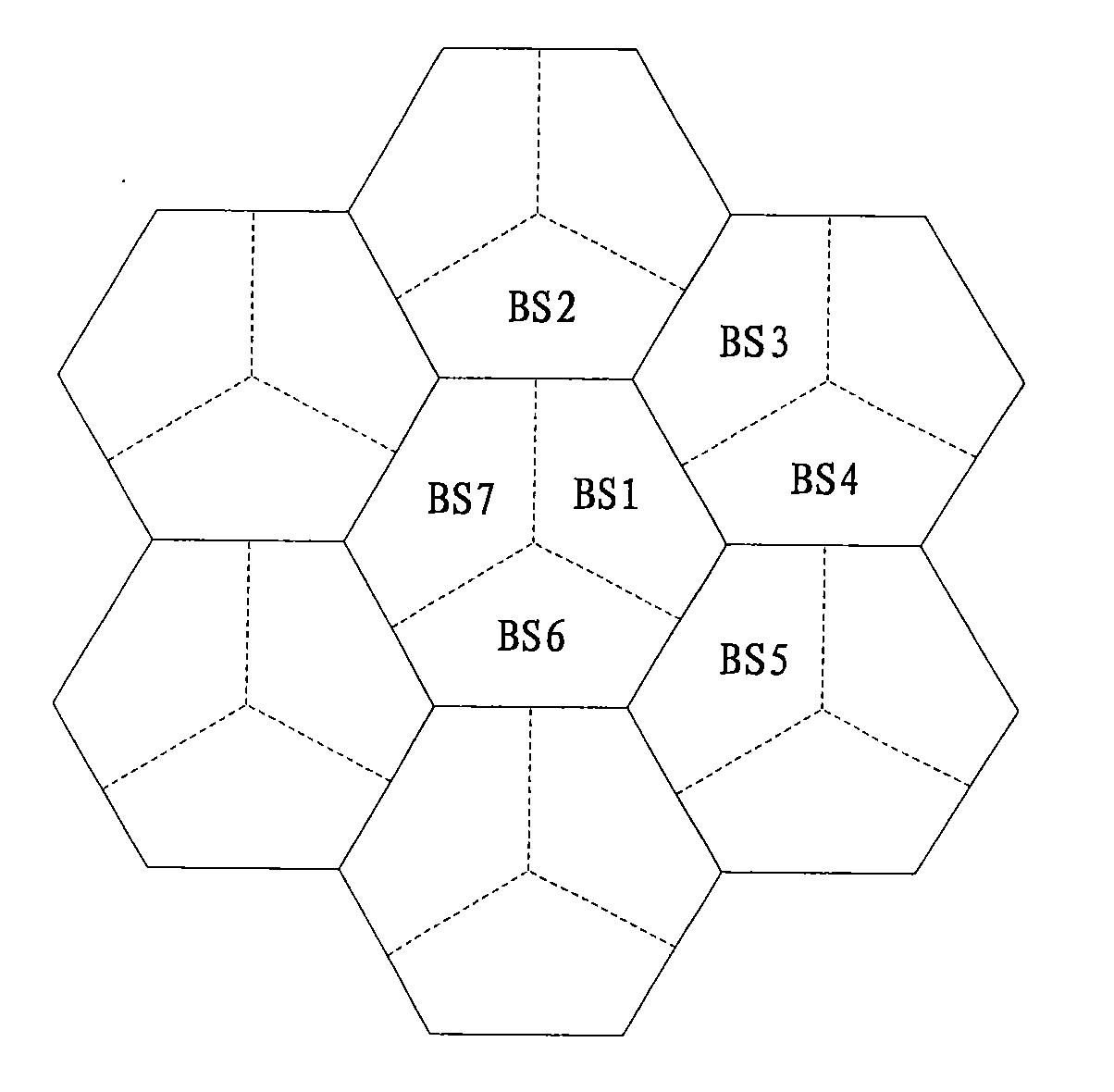Method and device for allocating uplink control signal resource in multi-base station network
A technology for controlling signals and distributing devices, applied in the directions of space transmit diversity, diversity/multi-antenna systems, etc., can solve the problem of difficulty in ensuring the orthogonality of uplink detection signal patterns, and achieve the effects of avoiding conflicts, suppressing interference, and improving throughput
- Summary
- Abstract
- Description
- Claims
- Application Information
AI Technical Summary
Problems solved by technology
Method used
Image
Examples
Embodiment Construction
[0066] image 3 This is a schematic diagram of sector planning according to a specific embodiment of the present invention. Such as image 3 As shown, each cell is divided into three sectors, and each sector has a base station. Because of the relationship between the antenna signal direction of the base station and the distance, the mobile terminal in a sector is most likely to receive interference signals from its neighbors. The base station of the sector. For example, if a mobile terminal in the sector where the base station BS1 is located receives the service of the base station BS1, the most likely interference signal it receives comes from the base stations BS2, BS3, BS4, and BS5. The base station most likely to serve a mobile terminal in cooperation should also be a neighboring base station. For example, base station BS1 and base station BS5 can cooperatively serve one mobile terminal, and base stations BS1, BS2, and BS3 can also cooperatively serve one mobile terminal.
...
PUM
 Login to View More
Login to View More Abstract
Description
Claims
Application Information
 Login to View More
Login to View More - R&D
- Intellectual Property
- Life Sciences
- Materials
- Tech Scout
- Unparalleled Data Quality
- Higher Quality Content
- 60% Fewer Hallucinations
Browse by: Latest US Patents, China's latest patents, Technical Efficacy Thesaurus, Application Domain, Technology Topic, Popular Technical Reports.
© 2025 PatSnap. All rights reserved.Legal|Privacy policy|Modern Slavery Act Transparency Statement|Sitemap|About US| Contact US: help@patsnap.com



